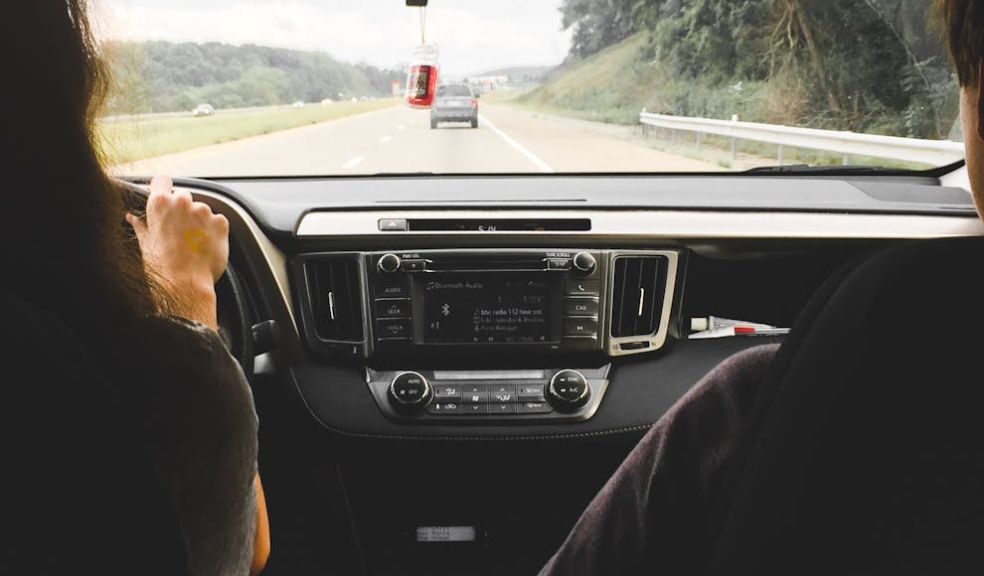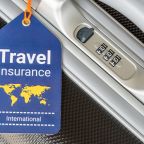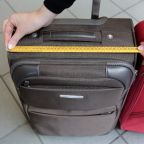
Top Tips for Hiring a Car in Australia: What to Check Before You Drive Away
Australia's vastness and diverse landscapes are best explored with the freedom and flexibility of a rental car. From navigating bustling cities to venturing off the beaten path in national parks, a rental car unlocks a world of possibilities. Imagine:
- Cruising along the Great Ocean Road, stopping at hidden coves and charming seaside towns at your own pace.
- Chasing waterfalls and exploring ancient rainforests in national parks, unrestricted by public transport schedules.
- Embarking on a multi-city adventure, experiencing the unique character of each destination with ease.
Hiring a car allows you to create your own Australian adventure, maximizing your time and exploring at your own rhythm.
Navigating the Rental Process: A Quick Overview
Renting a car in Australia is a straightforward process, but some key steps ensure a smooth and hassle-free experience. This guide will equip you with the knowledge and tips you need to navigate the car rental process with confidence.
1. Pre-Rental Preparations: Be Prepared, Drive with Confidence
Research and Compare Rental Companies: Find the Perfect Fit
Don't settle for the first offer you see! Research and compare different car rental companies to find the best deal for your needs. Here's how:
- Online Comparison Websites: To utilize websites to compare prices, car types, and customer reviews across major rental companies in Australia. Then, visit the Alpha Car Hire website to see if they offer a competitive rate for your needs.
- Rental Company Websites: Visit individual car rental company websites directly to explore specific deals, loyalty programs, and available car models.
- Consider Your Needs: Factor in your group size, planned activities (e.g., city driving vs. off-road adventures), and desired level of comfort (sedan vs. SUV) when choosing a car type.
Understanding the Fine Print: Rental Terms and Conditions
Before finalizing your booking, take some time to understand the rental terms and conditions. Here are some key points to pay attention to:
- Mileage Limits: Be aware of any daily or total mileage limitations and any associated excess mileage fees.
- Fuel Policy: Choose a fuel policy that suits you, such as "full-to-full" or "prepaid fuel." Understand any refueling charges if you don't return the car with a full tank.
- Additional Driver Fees: If you plan on sharing the driving responsibilities, inquire about additional driver fees.
- Insurance Coverage: While basic insurance is typically included, consider additional coverage options for peace of mind, especially if you plan on extensive travel.
Booking in Advance: Secure Your Ride and Save
Booking your rental car in advance offers several advantages:
- Better Deals: Early booking often leads to better rates, especially during peak travel seasons.
- Guaranteed Availability: Secure your desired car type and avoid disappointment, particularly for popular models during busy periods.
- Peace of Mind: Start your adventure with the confidence of knowing your transportation is secured.
2. Essential Documents and Requirements
Valid Driver's License
To rent a car in Australia, you'll need a valid driver's license from your home country. Here's what to keep in mind:
- License Validity: Ensure your driver's license is valid for the duration of your car rental period.
- International Driving Permit (IDP): While not always mandatory, an IDP is highly recommended. It's a translation of your driver's license into multiple languages and can help avoid any confusion or delays during the rental process, especially if your license is not in English.
Age Restrictions
Most car rental companies in Australia have minimum age requirements, typically ranging from 21 to 25 years old. There may also be additional young driver fees for renters under a certain age. Conversely, some companies may have age restrictions for senior drivers (usually above 70 years old). Inquire about any age-related fees or restrictions that might apply.
Credit Card and Identification
A valid credit card in the main driver's name is usually required for the rental deposit. The rental company will also need to see your passport or other valid photo identification for verification purposes.
3. Picking Up the Car: Ready, Set, Explore!
Inspecting the Vehicle: A Careful Eye Before You Drive Away
Before driving off, take some time to thoroughly inspect the car. Here's a checklist to ensure a smooth start to your journey:
- Exterior: Walk around the car and check for any existing dents, scratches, or other damage. Report any issues to the rental agent and have them documented on the rental agreement.
- Interior: Check the functionality of the seats, windows, locks, lights, and air conditioning. Ensure the car is clean and free of any pre-existing damage.
- Tire Pressure and Fluid Levels: Pop the hood and check the oil, coolant, and windshield washer fluid levels. Use a tire pressure gauge (often provided by the rental company) to ensure all tires are properly inflated, including the spare.
Understanding the Controls: Familiarize Yourself
Take a moment to familiarize yourself with the car's controls, especially if it's a different model from what you're used to driving. Locate the following:
- Lights (headlights, taillights, brake lights, turn signals)
- Wipers and washers
- Air conditioning and heating controls
- Mirrors and seat adjustments
Fuel Policy: Refuel Strategically
Understand the car's fuel policy (e.g., full-to-full) and check the fuel gauge before driving off. If it's a "full-to-full" policy, refuel the car just before returning it to avoid any refueling charges.
Additional Tips:
- Ask Questions: Don't hesitate to ask the rental agent any questions you may have about the car, local traffic laws, or anything else related to your rental.
- Take Photos: For added peace of mind, take photos of the car's exterior condition (including any pre-existing damage) as documentation upon pickup.
- Car Hire on the Gold Coast: Luckily, renting a car on the Gold Coast is a breeze! Numerous major car rental companies are conveniently located at Gold Coast Airport, making pick-up and drop-off effortless.
Safety and Insurance: Drive with Confidence, Minimize Risks
A safe and secure car rental experience is paramount. Here's what to consider:
Comprehensive Insurance Coverage
While basic insurance is typically included in car rentals, it often comes with a high excess (deductible) in case of damage. Consider upgrading to comprehensive insurance coverage to minimize your financial liability in case of an accident or theft. This will give you peace of mind and avoid a hefty bill at the end of your rental period.
Roadside Assistance: Help When You Need It Most
Ensure your rental includes roadside assistance. This service can be invaluable in case of a breakdown, flat tire, or other unforeseen issues on the road. Roadside assistance typically covers services like towing, jumpstarting, and flat tire repair, saving you time and hassle during your trip.
Emergency Contacts: Be Prepared for Anything
Before setting off, store important contact numbers in your phone:
- The rental company's emergency contact number
- Local emergency services (police, ambulance, fire department)
Having these numbers readily available ensures you can get help quickly in case of an emergency.
Driving in Australia: Navigate with Confidence
Road Rules and Regulations: Key Points to Remember
Australia follows a left-hand-drive system, which can be a significant adjustment for visitors accustomed to right-hand-drive. Here's a quick overview of some key road rules to remember:
- Stay Left: Always drive on the left side of the road and overtake on the right.
- Speed Limits: Speed limits are strictly enforced in Australia and vary depending on the location (typically 50 km/h in urban areas, 100 km/h on rural roads). Be sure to pay attention to posted speed limits.
- Give Way Signs: Yield to traffic coming from the right at intersections with a "Give Way" sign.
- Roundabouts: Traffic travels counter-clockwise in roundabouts. Yield to traffic already in the roundabout before entering.
- Seatbelts: Seatbelt use is mandatory for all occupants of the vehicle.
- Mobile Phone Use: Using a mobile phone while driving is strictly prohibited unless via hands-free functionality.
Navigation Tools: Chart Your Course
Get yourself oriented! Having reliable navigation tools will help you explore unfamiliar roads and reach your destinations efficiently. Here are your options:
- GPS Navigation System: Many rental cars come equipped with built-in GPS navigation systems. Alternatively, consider renting a portable GPS device if your car doesn't have one.
- Mobile Navigation Apps: Popular mobile apps like Google Maps or Waze can be used for navigation, provided you have a reliable internet connection or downloaded offline maps for remote areas.
Local Driving Tips: Be Aware of the Conditions
Driving conditions in Australia can vary significantly depending on the location. Here are some additional tips to keep in mind:
- Urban Areas: Be prepared for traffic congestion, especially during peak hours. Pay attention to one-way streets and parking restrictions.
- Rural Roads: Rural roads may be narrow and winding. Watch out for wildlife crossing the road, especially at dusk and dawn.
- Outback Regions: Outback roads can be long and remote. Ensure your car is properly serviced and fueled up before venturing into remote areas. Always carry extra water and supplies in case of emergencies.
Returning the Car: Ensure a Smooth Checkout
The final leg of your car rental journey is just as important as the beginning. Here's what to keep in mind for a smooth return process:
Return Location and Time
Double-check your rental agreement for the designated return location (usually the same branch where you picked up the car) and the specific return time. Returning the car late can incur additional charges, so plan your trip accordingly and factor in enough buffer time for traffic or unforeseen delays.
Final Inspection: Checking In Together
Upon returning the car, a rental agent will conduct a final inspection with you. This is your chance to ensure both parties agree on the vehicle's condition. Point out any pre-existing damage that was documented on the pick-up form.
Fuel Level and Receipts: Proof Matters
If you opted for a "full-to-full" fuel policy, make sure to refuel the car just before returning it to avoid refueling charges. Keep the receipt from the gas station as proof that you returned the car with a full tank.
Conclusion: Hit the Road and Explore!
With these comprehensive tips and a well-prepared approach, you're now equipped to navigate the car rental process in Australia with confidence. From finding the perfect car to understanding insurance options and mastering the road rules, this guide has equipped you for a safe and enjoyable driving experience. So, buckle up, hit the open road, and explore the vast beauty and diverse landscapes that Australia has to offer
Author’s Bio:
Marjorie Hajim has talent in writing and combines her passion for storytelling with her marketing expertise. She works as an SEO Manager at Alpha Car Hire, a leading car hire in Sydney, where she creates engaging articles to highlight their services. Besides her work, Marjorie enjoys spending time with her beloved dogs and immersing herself in compelling literature.
















